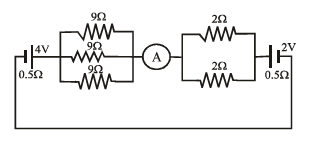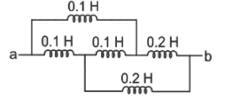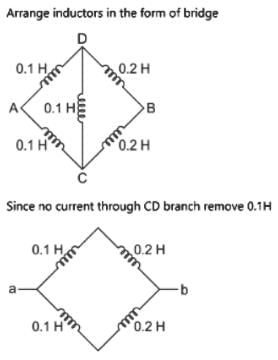Technical Test SSC JE: Electrical Engineering (EE)- 1 - Electrical Engineering (EE) MCQ
30 Questions MCQ Test - Technical Test SSC JE: Electrical Engineering (EE)- 1
Kirchhoff's second law is based on the law of conservation of
The resistance temperature coefficient is defined as
For the circuit shown the reading in the ammeter A will be

When checked with an ohm meter an open resistor reads
A light dependent resistor is basically a
Voltage dependent resistors are usually made from
Resistors across A & B in the circuit shown below is
Voltage dependent resistors are used
The power factor of incandescent bulb is
The equivalent inductance across 'ab' for the diagram shown below is:

If V2 = 1 – e–2t, the value of V1 is given by
For a parallel RLC circuit to be overdamped
The thevenin resistance across the diode in the circuit is
Find input resistance of the circuit shown is
A 3H – Inductor has 2000 turns. How many turns must be added to increase the inductance to 5H
For a series RLC circuit the power factor at the lowest half power frequency is
A series RLC circuit resonance at 1MHz at frequency of 1.1 MHz the circuit impedance is
If each branch of a delta circuit has impedance √3z , then each branch of equivalent Y–circuit
has impedance
A delta load is connected to a balanced 400 V, 3-f supply as shown in figure. The total power dissipated in the network is equal to
When Q-factor of the circuit is high, then
The dynamic resistance of a parallel resonance circuit is given by
A parallel resonant circuit can be employed
A 3-f star connected symmetrical load consumes p watts of power from a balancedsupply. If the same load is connected in delta to the same supply, the power consumption will be
In two wattmeters method of power measurement, one of the wattmeters will show negative reading when the load power factor angle is strictly
The external characteristics of a shunt generator can be obtained directly from its ____characteristics
For the voltage build up of a self excited d.c. generator, which of the following is not anessential condition?
Which of the following d.c. generator cannot build up on open-circuit?
Which of the following methods of speed control of D.C. machine will offer minimum efficiency?
Which winding of the transformer has less crosssectional area?
A dc series motor of resistance 1Ω across terminal runs at 1000 rpm at 250V taking acurrent of 20A when an additional resistance 6W is inserted in series and taking the samecurrent, the new speed will be
















